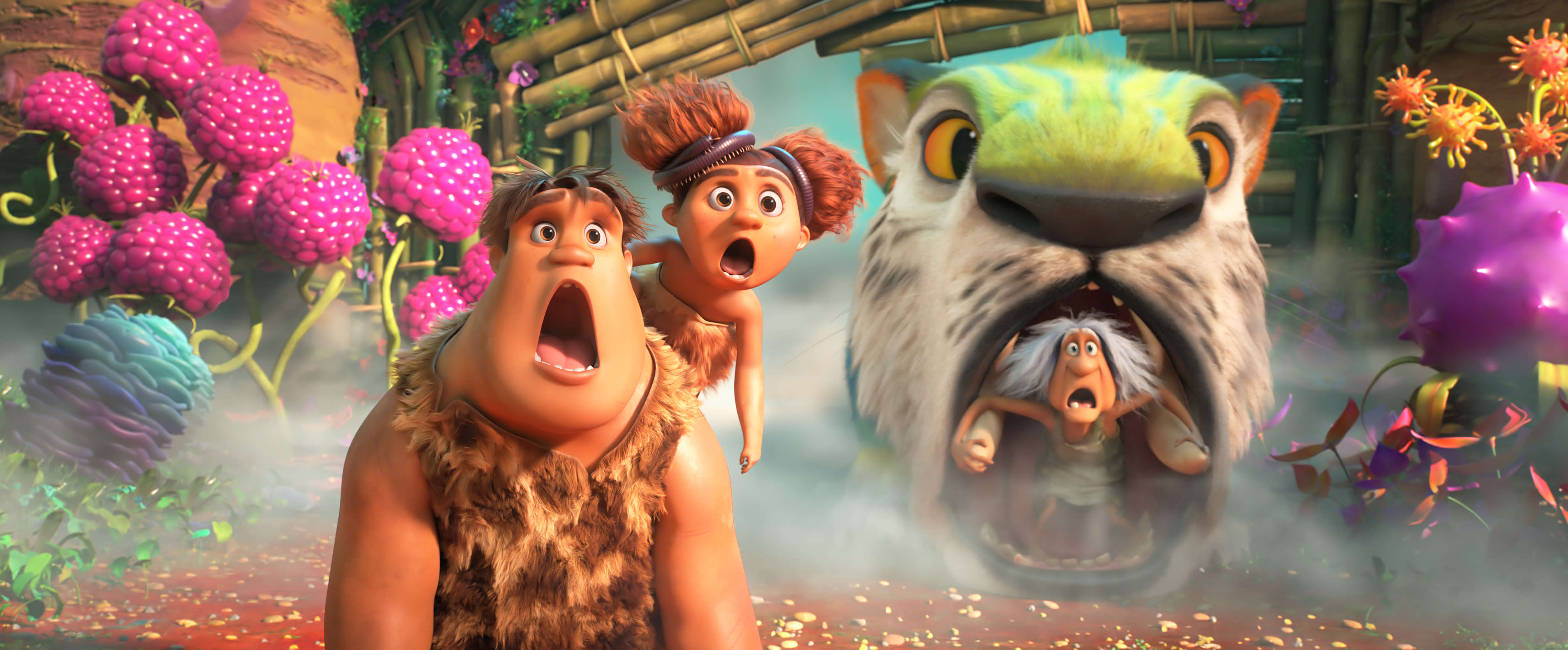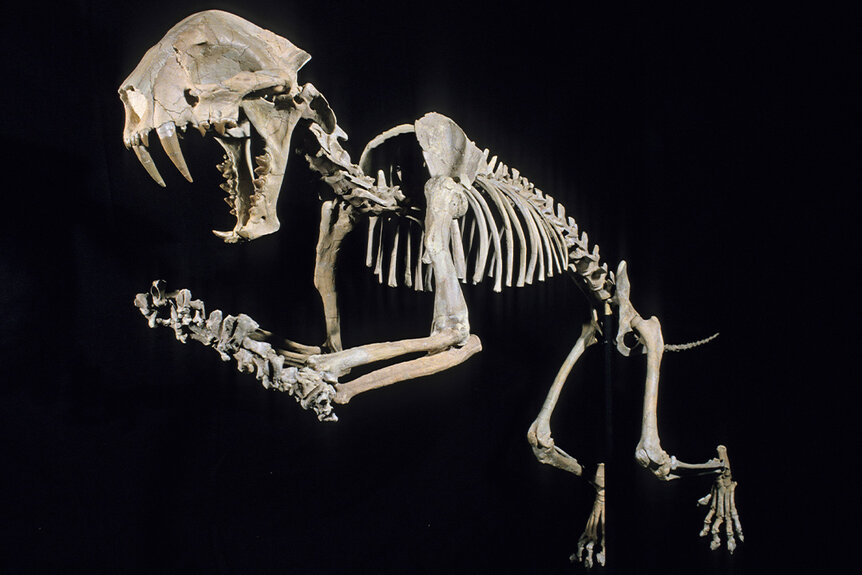Create a free profile to get unlimited access to exclusive videos, sweepstakes, and more!
The Extinction of Saber-Toothed Cats and Dire Wolves May Have Been Written in Their Bones
Climate change, inbreeding, and bone loss were all likely factors.

A few tens of thousands of years ago, the world would have looked a lot more like a fantasy land. The landscape was covered over by wilderness, humanity not yet having sequestered it to the fringes of our borders. Disparate groups of humans spread out from their ancestral homeland in Africa, exploring a wide range of ecosystems filled with all manner of incredible, and often deadly, animals.
We’ll likely never know what it was actually like to live during that time, but that hasn’t stopped us from imagining it in our stories. DreamWorks Animation's 2013 family film The Croods gave us one (admittedly fantastical) version of prehistory through the eyes of a fictional family of primitive humans. As they travel the world, they must face the ferocious saber-toothed cat, affectionately called Chunky. It’s a cuter version of real-world interactions which occurred between humans and ice age predators thousands of years ago.
We know we lived alongside saber-toothed cats, thanks to evidence from the fossil record and from artifacts left behind by our long-dead ancestors. We also know they disappeared somewhere along the way, probably through a combination of environmental pressure and human influence. Now, scientists have uncovered another piece of their extinction story etched into their bones.
What caused the extinction of saber-toothed cats and other ice age predators?
As the ice age raged on and the global climate shifted, a debilitating bone disease spread through populations of large predators at an increased rate, according to a new study published in the journal PLOS One.
Researchers gathered hundreds of specimens of saber-toothed cats and dire wolves, both large predatory animals which lived during the last ice age, from the La Brea site in California. Scientists focused on the limb bones of these large predators, looking for telltale defects associated with osteochondrosis dissecans (OCD).
RELATED: New Species of 600-Pound Saber-Toothed Cat Once Prowled North America
The results of their analysis suggest that OCD became more prevalent among both dire wolves and saber-toothed cats during the last ice age and may have contributed to their eventual demise. Small defects in the bones were found in roughly 7% of saber-toothed cats, while about 3% of the studied population had larger defects.
How heavily the disease impacted individuals is unknown, but skeletal disease could have presented a significant problem for large predators, making it difficult for them to patrol territory or chase down prey. How animals were impacted also appeared to differ across species, with saber-tooth bone loss occurring mostly in the knees, while dire wolf bone loss was concentrated primarily in the shoulders.
It’s also unclear precisely why OCD appears to have spiked in these populations during the last ice age, but researchers hypothesize it may have resulted from inbreeding. It’s almost certain that humans played an outsized role in the demise of these animals, but shrinking populations isolated by climate change may have experienced inbreeding-driven bone disease that made them particularly easy targets.
Somebody better take Chunky to the vet to get his bones checked. Catch The Croods: Family Tree, streaming now on Peacock!



























